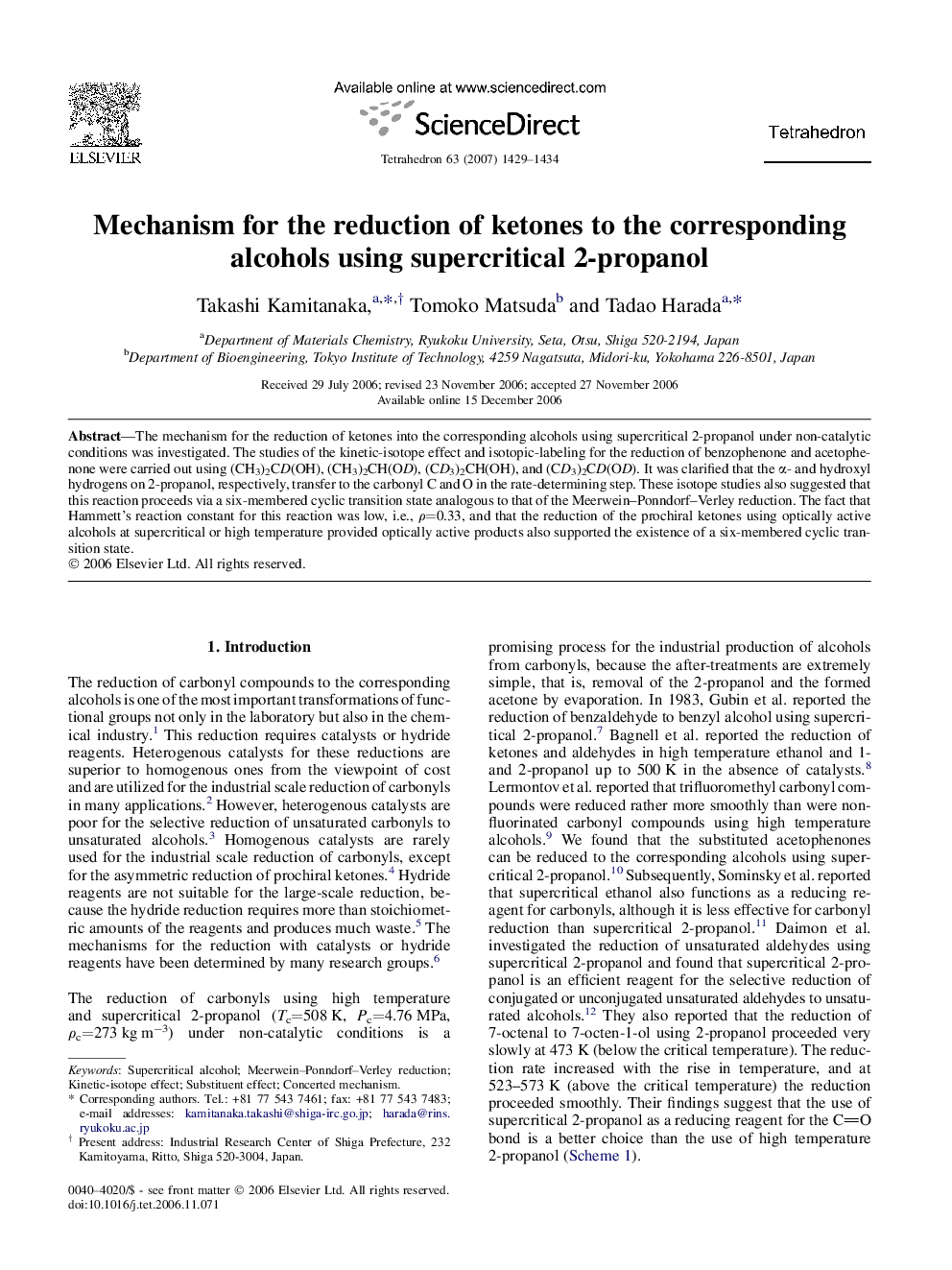| Article ID | Journal | Published Year | Pages | File Type |
|---|---|---|---|---|
| 5228979 | Tetrahedron | 2007 | 6 Pages |
The mechanism for the reduction of ketones into the corresponding alcohols using supercritical 2-propanol under non-catalytic conditions was investigated. The studies of the kinetic-isotope effect and isotopic-labeling for the reduction of benzophenone and acetophenone were carried out using (CH3)2CD(OH), (CH3)2CH(OD), (CD3)2CH(OH), and (CD3)2CD(OD). It was clarified that the α- and hydroxyl hydrogens on 2-propanol, respectively, transfer to the carbonyl C and O in the rate-determining step. These isotope studies also suggested that this reaction proceeds via a six-membered cyclic transition state analogous to that of the Meerwein-Ponndorf-Verley reduction. The fact that Hammett's reaction constant for this reaction was low, i.e., Ï=0.33, and that the reduction of the prochiral ketones using optically active alcohols at supercritical or high temperature provided optically active products also supported the existence of a six-membered cyclic transition state.
Graphical abstractDownload full-size imageRegarding the reduction of the carbonyl group using supercritical 2-propanol, a low Hammett's reaction constant tells us that simultaneous transfers of Hδ+ and Hδâ from the 2-propanol to the carbonyl group occur.
